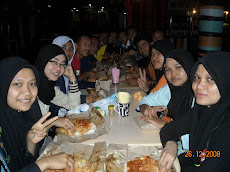The forests of Ulu Muda cover an area of approximately 160,000ha (about twice the size of Perlis) located within the districts of Baling, Padang Terap and Sik in the northeastern corner of Kedah.
Ulu Muda contributes about half of the forest cover of Kedah. Wildlife surveys have shown the area to have substantial populations of large mammals, especially elephants and tapirs, as well as a rich diversity of birds including large flocks of the globally-threatened plain-pouched hornbill. In addition to the Ulu Muda Forest Reserve, the area consists of a number of other forest reserves (see Table 1 below).
There are three large man-made lakes within the Ulu Muda area, namely Muda, Ahning and Pedu, formed by the construction of three correspondingly-named dams that regulate water for domestic use and irrigation for most of Kedah, Penang and Perlis.
Much of Ulu Muda has yet to be properly explored. A landmark scientific expedition in 2003 organised by the Forestry Department was the first concerted effort at investigating this hidden realm. This initial effort, although producing some impressive results, was merely a glimpse of what lies beneath a deep well of biodiversity.
The Kedah State Government has recently expressed its intention to establish a state park at Ulu Muda and this is widely acknowledged as the way forward for biodiversity conservation and nature tourism at Ulu Muda.
Table 1
Geology: Limestones and Cave
Tectonic activity during the late Triassic Period caused the sedimentary rocks to be uplifted from the seabed to form land. This uplifting process was caused by the intrusion of igneous material which later formed granitic rock in the Ulu Muda area. After land was formed, sedimentation occurred again, but this time along the river valleys. Weathering and erosion over a long period of time gave rise to the topography that can now be observed at Ulu Muda .
Bukit Saiong
One of the most prominent geological features in the Ulu Muda area is Bukit Saiong, a distinctive sandstone hill separating Pedu Lake from Muda Lake. The peak of Bukit Saiong can clearly be seen from the Muda Lake. Of interest is the abundance of smooth white-coloured rocks along some of the streams that are tributaries to the Muda River.
Sadly, these rocks, known as batu lilin (wax rocks), are now much depleted in the more accessible areas due to over-collection as a result of high demand by rock collectors who prize them for their aesthetic values.

Sadly, these rocks, known as batu lilin (wax rocks), are now much depleted in the more accessible areas due to over-collection as a result of high demand by rock collectors who prize them for their aesthetic values.
Limestone Hills
Many limestone hills have unique species of herbaceous plants, snails and other invertebrates such as spiders that are found on no other limestone hill, even neighbouring ones. Most limestone hills also have caves.
Rumours of caves in the Ulu Muda area have floated about for many years but this has only recently been confirmed. Two moderately large caves have been surveyed by Hymeir Kamarudin and Rohani Rahmani (Ronn) from the Malaysian Nature Society. The presence of limestone caves provides the opportunity to add caving as another exciting recreational activity for visitors to Ulu Muda.

Rumours of caves in the Ulu Muda area have floated about for many years but this has only recently been confirmed. Two moderately large caves have been surveyed by Hymeir Kamarudin and Rohani Rahmani (Ronn) from the Malaysian Nature Society. The presence of limestone caves provides the opportunity to add caving as another exciting recreational activity for visitors to Ulu Muda.
Climate and Hydrology
The largest of the three lakes in the Ulu Muda area is the Pedu Lake which covers an area of 15,500ha. Although Muda Lake is smaller (5,200ha) it has a larger catchment area and there is a 6.6km long tunnel that channels water from Muda Lake to Pedu Lake. Kedah and Perlis are prone to seasonal drought and water stress, and therefore the Ulu Muda forest plays an important role in regulating water flow to the Muda River and its tributaries.
Industry
The electronics and heavy industries sector centred at Penang Island, Seberang Perai and Kulim in southern Kedah are also highly dependent on the continuous supply of clean water originating from the Ulu Muda forest. Penang has one of the cheapest water rates in the country and this is one of the factors that makes it an attractive location for investments from multi-national companies.
For more information you can go through with this link (http://www.saveulumuda.com/).
Please sign this petition if you love our forest from destroying by people who unresponsible to life and environment.
Love our forest, save many life and keep recycling of ecosystems.
click this link to get the online petition..
http://www.saveulumuda.com/petition.php
For more information you can go through with this link (http://www.saveulumuda.com/).
Please sign this petition if you love our forest from destroying by people who unresponsible to life and environment.
Love our forest, save many life and keep recycling of ecosystems.
click this link to get the online petition..
http://www.saveulumuda.com/petition.php














.jpg)




















